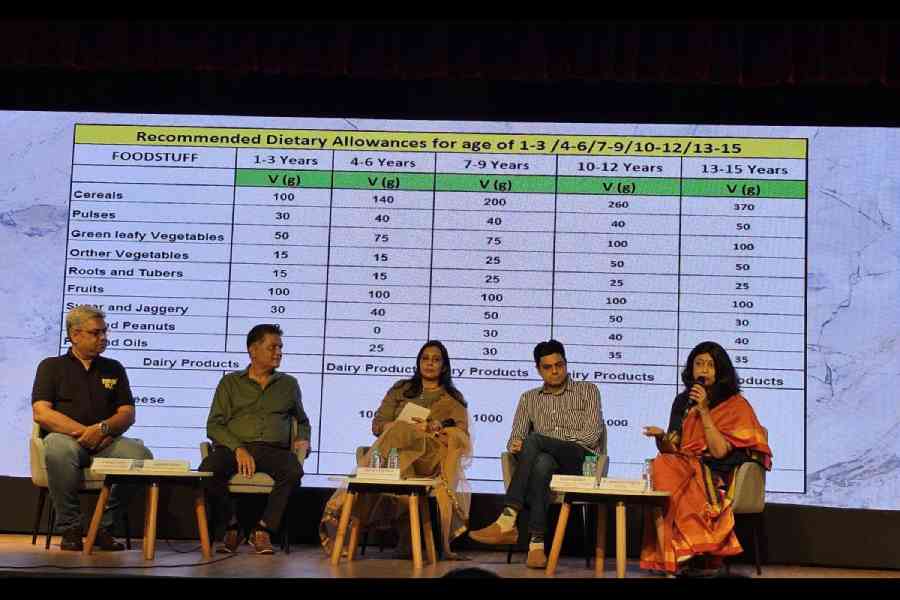The tiffin box was the theme of a recent discussion at SPK Jain Futuristic Academy where parents of children gathered to hear and interact with experts who discussed the nutritional needs of children.
Karan Kakkad, founder and CEO of Reverse Factor, a health tech company dealing with lifestyle disease management, shared some suggestions for the food to serve children at home. “Boil a kilo of drumsticks. Give them six or seven boiled pieces just before a meal. It is good for digestion and also fends off diabetes.”
He also rooted for natural and plant-based food. “Apple comprises of living cells. So it becomes dark if it is left after being cut. We should have more of such fruits.”
He also advised parents to weave narratives around food, on the benefits of each item.
Learn through experience
The biggest headache is to make healthy food for children who are finicky eaters. To make such children value food, blogger Indrajit Lahiri shared a personal experience. “During Covid, my son was asked to make breakfast for the family twice a week. He used to make horrible food, burnt toast and the like. He knew he had to eat what he made. Gradually he learnt to make better food.” He advised parents not to shelter children and expose them to experiences. “Send them out to the market to buy vegetables if you run out of an item or two. The first few days he will bring the worst products but he will learn to choose better ones. He will learn how to count as well,” Lahiri said, stressing the value of experiential learning.
School principal Joyeeta Ganguly shared how the school canteen devised ways to serve nutritional food. “We sneak in beetroot or cauliflower in the dough for puri. The atta is fortified with millet. When chowmien is served, we use rice noodles. Our pasta too is buckwheat pasta. Maida is sparingly used, so the food has low glycaemic value. Only once a week they are allowed to have chhola batura. We also never reuse burnt oil.”
Presentability, Lahiri pointed out, was important. “Cut fruits with a cutter. We have to be smarter than the kids. Dal is dull to look at. Circle it with rice, take a top shot and post it on Instagram tagging him. If he gets ‘likes’, he will eat it even if it does not taste well,” he said.
Ganguly asked parents to spend time with their children. Listen to his take on the day. It is more important than making him sit for physics or chemistry lessons.” Jaydeep Patwa, secretary of the school, also urged parents not to force kids to eat. “And when he eats, eat with him. At school, they sit together in the canteen. No mobile is needed then to make them eat.”
Restricting mobile usage was also a topic of discussion. Lahiri shared some rules followed at his home. “We do not watch YouTube on the mobile. It is allowed only on the big screen. Thus screen time comes down.”
The milk debate
Some parents also posed questions for the panel. A mother, who avoided dairy products, has had in-laws visiting who are forcing her to give milk to her son at night. Pure milk, she was told, was heavy for the stomach and kids not used to it might not be able to digest it at night. “Milk consumption has gone up so cows are given hormone injections to increase their productivity. Today’s milk is different from the natural cow milk 50 years ago. So it is better not to give children dairy products daily,” was the expert advice from the panel.
As a replacement for milk as a source of calcium, parents were advised to serve sesame seeds and chia seeds. “Even cows get their calcium from grass. Calcium is a mineral and, like all minerals, is present in the soil,” Kakkad said.
